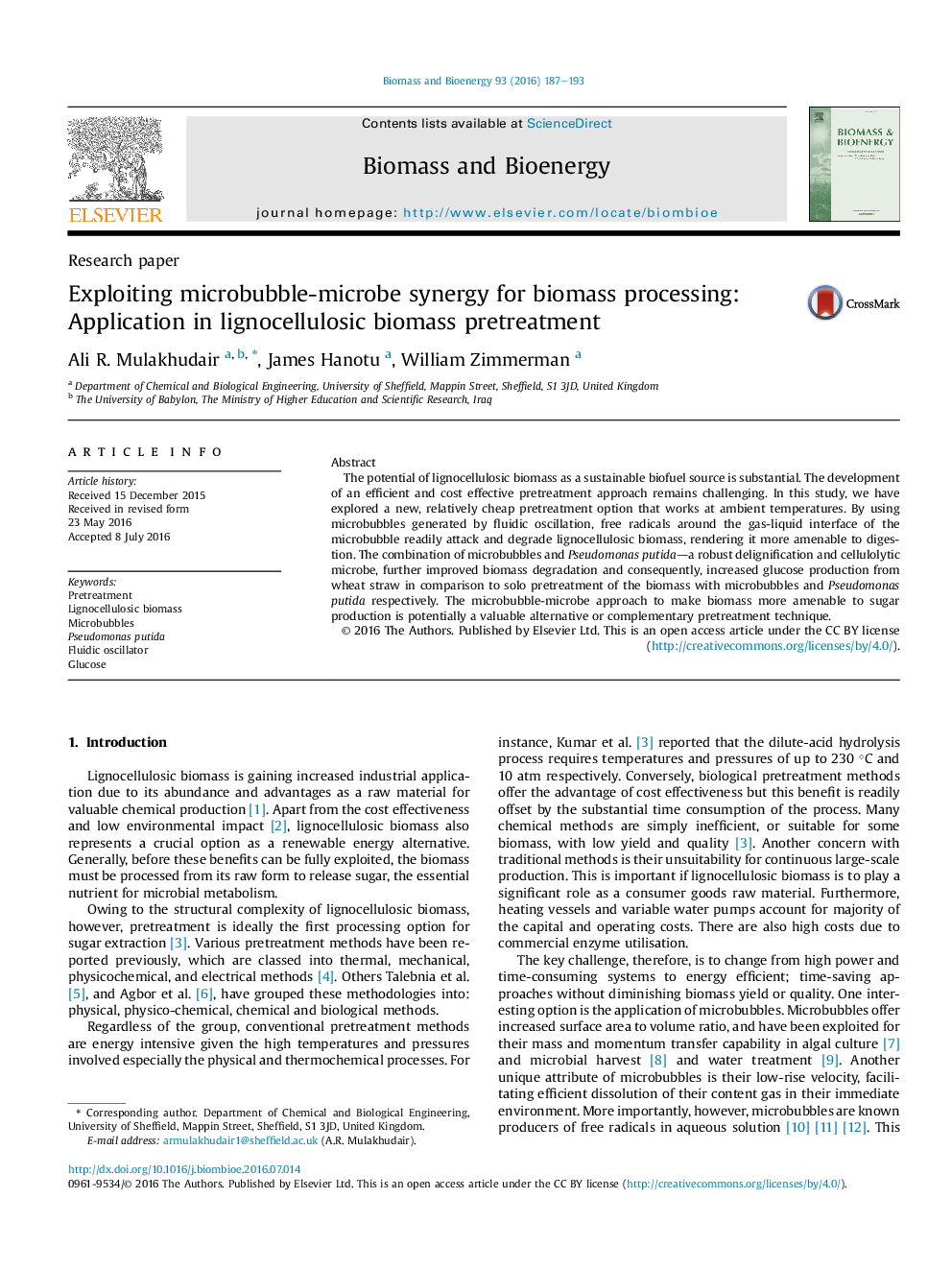| Article ID | Journal | Published Year | Pages | File Type |
|---|---|---|---|---|
| 7063193 | Biomass and Bioenergy | 2016 | 7 Pages |
Abstract
The potential of lignocellulosic biomass as a sustainable biofuel source is substantial. The development of an efficient and cost effective pretreatment approach remains challenging. In this study, we have explored a new, relatively cheap pretreatment option that works at ambient temperatures. By using microbubbles generated by fluidic oscillation, free radicals around the gas-liquid interface of the microbubble readily attack and degrade lignocellulosic biomass, rendering it more amenable to digestion. The combination of microbubbles and Pseudomonas putida-a robust delignification and cellulolytic microbe, further improved biomass degradation and consequently, increased glucose production from wheat straw in comparison to solo pretreatment of the biomass with microbubbles and Pseudomonas putida respectively. The microbubble-microbe approach to make biomass more amenable to sugar production is potentially a valuable alternative or complementary pretreatment technique.
Related Topics
Physical Sciences and Engineering
Chemical Engineering
Process Chemistry and Technology
Authors
Ali R. Mulakhudair, James Hanotu, William Zimmerman,
